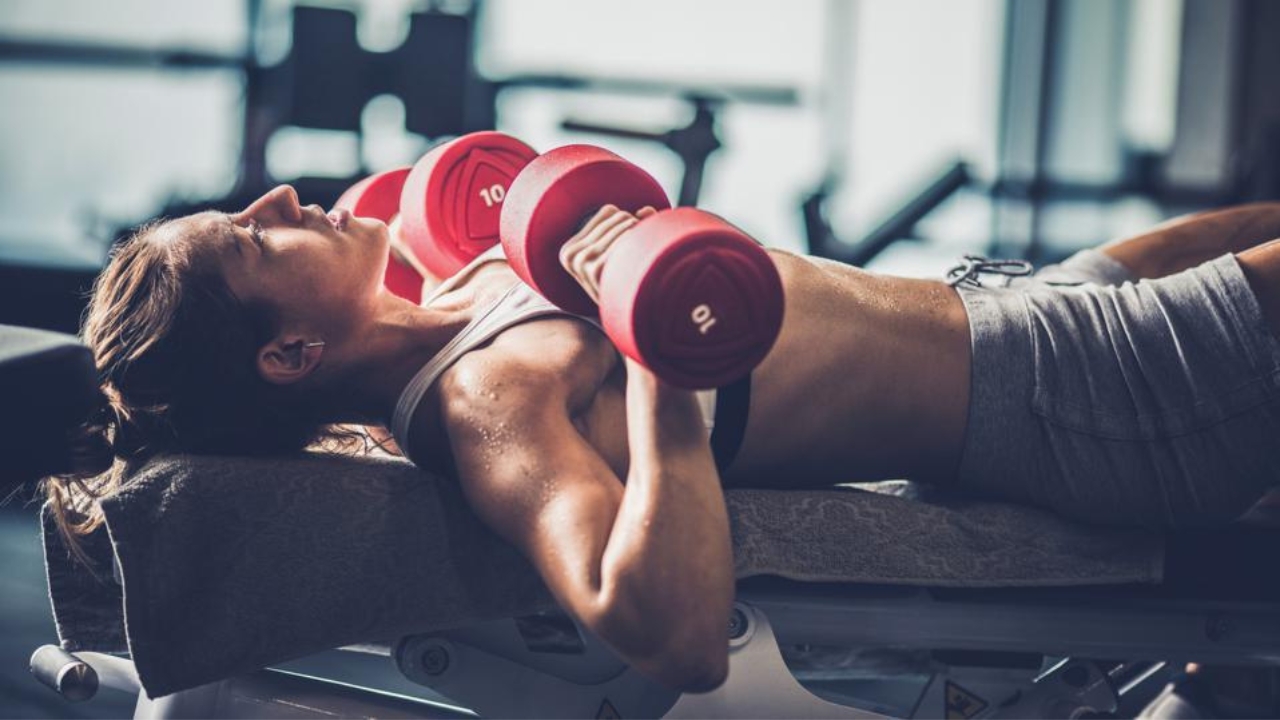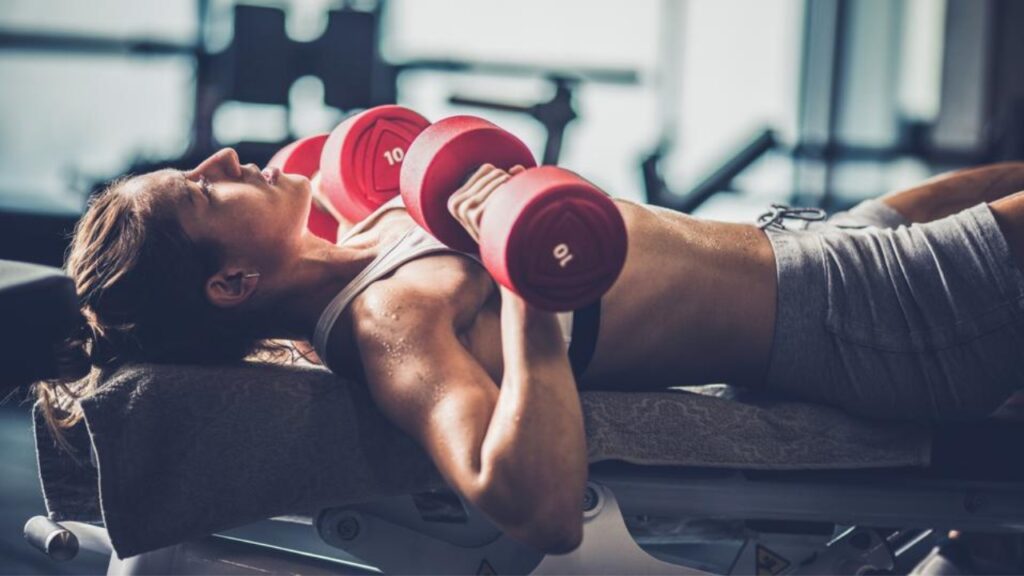Best exercises for health and fitness?

A person’s ability to gain muscle strength and improve their heart, lungs and overall circulatory health can be significantly aided by the strong combination of aerobic activity and strength training. The most efficient forms of exercise are those that work numerous sets of muscles at once.
These include a variety of workouts that call for very little to no equipment and are adaptable to a wide range of physical capabilities. In this article, we take a look at ten of the most effective workouts for improving one’s health and fitness overall. In addition to providing detailed directions, we break down exactly which parts of the body each exercise targets most effectively.

Doing the exercises
Individuals can perform each of the following exercises either on their own or as part of a circuit. Some of them call for the use of fundamental fitness equipment, such as dumbbells or an exercise ball, while others can be performed without the use of any equipment at all.
The American Council on Exercise recommends that people continue to perform repetitions until they reach a point where they can no longer maintain appropriate form or until they reach a point where their muscles get fatigued.
On the other hand, they suggest that athletes who compete in endurance events, such as runners and cyclists, should limit themselves to roughly 20–30 repetitions rather than working out until their muscles are completely fatigued.
At least twice a week, a person should perform 8–12 repetitions of 8–10 different strength training exercises. This recommendation comes from the American College of Sports Medicine (ACSM).
A minimum of thirty minutes of physical activity each day, five days per week, at a moderate level, is also recommended by the ACSM. Alternately, they suggest that individuals engage in bouts of strenuous physical exercise lasting for twenty minutes on three different days per week.
Pushups
The arms, chest, and shoulders are all targeted by pushups, making them a great exercise for overall strength.
How to do them:
- Start in a plank position with your arms straight and your body pulled straight up off the ground. To support the body, keep the feet close together and flexed.
- The fingers should be pointed straight ahead or slightly inward, and the palms should be flat on the floor, shoulder-width apart.
- Slowly bend the elbows outward while keeping the head in alignment with the spine. Lower the body to the ground.
- Keep your hips and lower back in alignment.
- Aim to touch the chest or chin to the ground as low as you can.
- Press the body back up into the starting position by using the arm muscles.
- As you go along, keep your abs tight to support your back.
Bodyweight squats
Squats performed with one’s own body weight can help build strength in the lower body as well as the abdominals, buttocks, hips, thighs, calves, and shins.
How to do them:
- Standing with the toes pointed slightly outward, space your feet a little wider than hip-width apart.
- Keep the shoulders back and the hands down by the sides with the palms facing in.
- Make use of your abs to support your back.
- Keeping a flat back, shift your hips back and bend your knees as if you were going to sit down.
- Continue to lower yourself until your thighs are parallel to the ground.
- To straighten back up and return to the starting position, push through the feet.
- Exhale when rising from the squat and before starting again.
Lunges
The legs, buttocks, hips, and abdominal muscles all get a workout from lunges.
How to do them:
- Put your feet together and maintain your posture.
- Knee bent and foot flat on the ground, extend one leg forward into a long stride.
- The supporting leg’s knee should be bent toward the ground.
- Push yourself back up to standing by using the muscles in the forward leg.
- Continue with the other leg.
Running
Running is a type of aerobic activity, and research has shown that it can assist increase both cardiovascular fitness and bone strength. Jogging, a form of running that is less strenuous than running, is the type of running that is recommended for beginners.
Interval running, in which participants run for a predetermined amount of time or distance, then transition to walking for a set amount of time before starting to run again, is a popular way for people to build up their running endurance.
People also have the option of alternating between running and sprinting in their workouts. Sprint interval training has the potential to reduce body fat, boost aerobic capacity, and hasten the runner’s peak speed.
Side planks
Building up your core strength with exercises like the side plank might help alleviate lower back pain. Buttocks, hips, and abdominal muscles all get a workout from side planks.
How to do them:
- Lay on your right side with your arms at your sides and your legs extended directly on top of one another.
- Keep the head and body in alignment as you contract your abs and raise your knees and hips off the ground.
- Hold the posture for 15 to 20 seconds, being particularly mindful not to let the hips, head, or shoulders sag.
- Return to the ground slowly, change to the left side, and then repeat.
Planks
Exercises such as planks help increase core strength by strengthening the back and abdominal muscles.
How to do them:
- Keep the elbows in line with the shoulders as you descend the arms to the floor.
- Lift the body so that it is horizontal to the floor and creates a straight line.
- To support the body, keep the feet close together and flexed.
- For 20 to 30 seconds, hold.
- Lower to the ground gradually, take a minute to rest, then repeat 3-5 times.
- People can try a high plank once they feel strong after this workout. The identical body position is used for this technique, but the participant keeps their arms straight and places their palms squarely beneath their shoulders.
Knee tucks
Abdominal muscles, calf muscles, and shin muscles all get a workout with knee tucks. For this particular workout, participants will require the use of a stability ball, also known as an exercise ball.
How to do them:
- On top of the stability ball, lie on your stomach with your hands and feet flat on the ground.
- Once the knees are propped up on the ball and the feet are raised off the ground, advance while holding onto your hands. Directly beneath the shoulders is where the hands should be.
- To tuck the knees into the chest, roll them in front of you.
- In order to get back to the starting position, slowly press your knees back.
Glute Bridge
The Glute Bridge is a great exercise to strengthen the muscles in the back of the body, which are collectively referred to as the “posterior chain.”
How to do it:
- Knees bent and feet flat on the floor while lying on your back.
- To raise the hips off the ground and align them with the shoulders and knees, contract the buttocks and abdominal muscles. Do not let your lower back arch.
- Return to the starting position gradually.
- Standing dumbbell presses overhead
Overhead Shoulder Press
Perform this exercise to help strengthen the muscles in your shoulders. The individuals will need to make use of two dumbbells.
How to do them:
- Legs should be hip-width apart when you stand.
- Bend your arms to raise the dumbbells to shoulder height while holding one in each hand with the inside of your wrists facing forward.
- Lift the dumbbells over the shoulders by contracting the core muscles, and exhaling while raising the arms straight up.
- Inhale to slowly lower the weights back down to shoulder height while bending the elbows.
- Avoid letting your lower back arch.
- Your Ultimate Guide to Travel Insurance for Adventure Sports
- A Guide to Renters Insurance for Pet Owners: Pet-Proof Your Policy
- Safeguard Your Future: Understanding Identity Theft Insurance
- Safeguard Your Event: Understanding Event Cancellation Insurance
- Everything You Need to Know About Critical Illness Insurance Riders
- Home Equity Loans vs. HELOCs: Which is Right for You?












